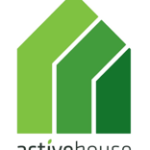IBR Future Complex
Location: Gaoqiao Village, Pingdi Street, Longgang District, Shenzhen, Guangdong Province, China
Owner/investor: Shenzhen Institute of Building Research
Architects: Ye Qing Wang Xin, He Liantao, NIU Runzhuo, Li Xiaojuan
Project type: Research and design services – office space, research labs, servers for energy data, auditorium


Design parameters: Comfort
- The project implements various active design strategies for daylight, thermal comfort and ventilation optimization. It is estimated 83.7% regularly occupied floor area meets the requirements of standard average daylight factor due to the design of integrated building façade, multi-orientated glazing with 0.63 transmittance and etc. Incident glare risk and solar heat gain are managed through horizontal & vertical exterior shading, vertical greening and window-blinds 100% regularly occupied area has operable windows for better natural ventilation during transit seasons, and air-conditioning systems designed support flexible and individual controls -with VRV terminals or three-speed outlets. The air quality in all main rooms is controlled when occupied and the ventilation is optimized to keep the CO 2 level and humidity low. Air duct electrostatic purifier (minimal F7 class) – PM2.5 filtration efficiency higher than 97%- is applied in PAU units to filter outdoor air.

Design parameters: Energy
- The project focuses on reducing energy consumption and optimizing renewable energy utilization. The cooling load through the building envelop has been minimized using the best insulation solutions and double skin façade. The double skin façade would be integrated with exterior shading, vertical greening or BIPV. There is no heating system required under the climate in Shenzhen.
- Heating system required under the climate in Shenzhen. The project innovatively adopts new building power distribution system of “PEDF (Photovoltaic, Energy, Direct current, Flexibility)”, which tries to form a “building virtual power station” that can effectively interact with urban power grid in buildings. Through one-year test, it is shown that the R3 building (5000m 2 ) does not rely on municipal power grid for off grid operation in 80% of the whole year.


Design parameters: Environment
- The project adopts FSC certified wood and other certified green building material to reduce carbon emissions during material production phase. The project uses a large number of recyclable materials such as iron, steel, glass, and aluminum alloys, which can be recycled during the building demolition phase and reduce carbon emissions by 235.36kgCO2/m 2 (based on the calculation metrics in<Carbon Emission Calculation for Buildings> GB/T 51366). Photovoltaic panels are laid on the roof and façade, which can reduce carbon emissions during operation phase. The project adopts the highest-level water-saving appliances, micro irrigation, high pressure water cannon and other water-saving appliances. Grey and rainwater are used to reduce the water consumption in garden, toilets and garage.

RADAR



